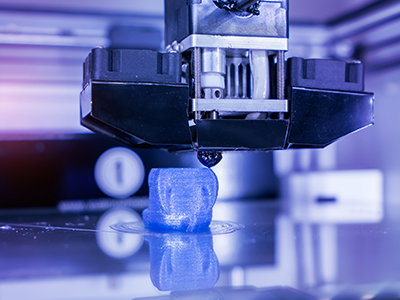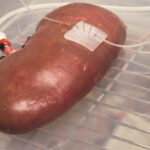
 Almost anything, it seems, can be 3D printed these days as materials capabilities continue to come into focus. The technology, which has so long been associated by many with the creation of small plastic items, is finally being more widely seen for what it really is and what it has the potential to become. Nowadays, we can 3D print cars and motorcycles. We can 3D print rocket engines and artificial hearts that beat like the real thing. We can even 3D print human tissue, with a legitimate hope of eventually being able to 3D print functional, transplantable human organs. It should come as no surprise, then, that we should be able to 3D print explosives.
Almost anything, it seems, can be 3D printed these days as materials capabilities continue to come into focus. The technology, which has so long been associated by many with the creation of small plastic items, is finally being more widely seen for what it really is and what it has the potential to become. Nowadays, we can 3D print cars and motorcycles. We can 3D print rocket engines and artificial hearts that beat like the real thing. We can even 3D print human tissue, with a legitimate hope of eventually being able to 3D print functional, transplantable human organs. It should come as no surprise, then, that we should be able to 3D print explosives.
Recently, a team of researchers from Purdue University created a shock wave using 3D printed energetic materials. Energetic materials are a class of material that contains high amounts of stored chemical energy that can be released, and they are used in everything from airbags to explosives. The researchers used an inkjet 3D printer to deposit tiny amounts of the materials, which were then used to create a miniature shock wave. The team described the experiment as one designed to improve the precision and safety of energetic materials, and now Australia’s Defence Science and Technology Group (DST) is also looking at 3D printing as a way to make energetic materials safer and more effective.
Minister for Defence Industry, the Hon. Christopher Pyne MP, announced that the DST will be partnering with industry and academia to develop new technologies that will improve the safety and performance of energetic materials. The group will work with several organizations, including:
- DefendTex Pty Ltd.
- The Royal Melbourne Institute of Technology
- Flinders University
- Cranfield University
3D printing materials such as explosives, propellants and pyrotechnics could not only improve their performance but offer significant logistical and cost benefits in their manufacture, said Pyne.
“This research could lead to the production of advanced weapons systems, which can be tailored for unique performance and purpose,” he said. “It should also allow broader access and more efficient and environmentally friendly manufacturing opportunities to Australian industry providing significant cost savings and competitive advantage for Defence, and industries such as mining construction.”

Through the Cooperative Research Center (CRC) program, AUD$2.6 million has been committed over the next two years.
“These outcomes will have far-reaching civilian and Defence applications and contribute to the development of critical expertise in energetic manufacturing techniques in Australian industry,” said Pyne.
3D printing has been proving itself to be extremely useful for a number of applications in the military, helping servicemen and women in their day-to-day operations in a number of ways. Further research into 3D printing of energetic materials could bring the technology directly onto the battlefield. The military isn’t the only sector in which this research is likely to have an impact, however. It could also result in better car safety features such as airbags, as well as more effective industrial equipment.
Discuss this and other 3D printing topics at 3DPrintBoard.com or share your thoughts below.
[Source: DST Group]
If you're looking to get architectural 3D animation in the USA, our service provides an exceptional way to bring your architectural concepts to life through dynamic, immersive visuals. Through our platform, you can easily request high-quality 3D animations that showcase your designs in motion, offering a detailed view of your project from multiple angles and perspectives. Whether it's for a real estate development, a commercial building, or an urban planning project, our expert team ensures that every detail is captured in a visually compelling animation.
Through our website, you can seamlessly get architectural 3D animation tailored to your project’s specific needs. With our help, you can offer potential clients or investors an engaging experience that goes beyond static images. By integrating CGI animations with real-world settings, lighting, and textures, our team creates a lifelike experience that allows your audience to interact with your project as though it were already built. This service is perfect for presenting complex designs in a clear, visually attractive way that stands out in the competitive architectural market.




